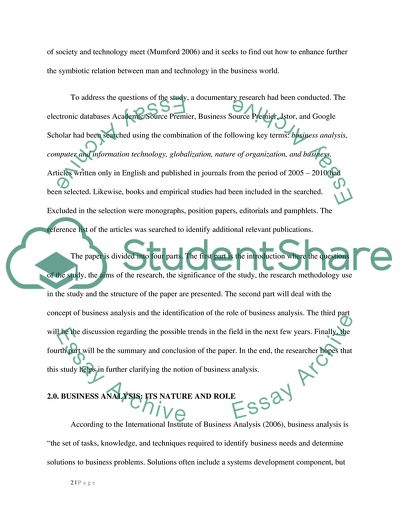Cite this document
(“The role of Business Analysis within organsiations and how it has Research Paper”, n.d.)
The role of Business Analysis within organsiations and how it has Research Paper. Retrieved from https://studentshare.org/miscellaneous/1573860-the-role-of-business-analysis-within-organsiations-and-how-it-has-evolved-over-the-past-thirty-years
The role of Business Analysis within organsiations and how it has Research Paper. Retrieved from https://studentshare.org/miscellaneous/1573860-the-role-of-business-analysis-within-organsiations-and-how-it-has-evolved-over-the-past-thirty-years
(The Role of Business Analysis Within Organsiations and How It Has Research Paper)
The Role of Business Analysis Within Organsiations and How It Has Research Paper. https://studentshare.org/miscellaneous/1573860-the-role-of-business-analysis-within-organsiations-and-how-it-has-evolved-over-the-past-thirty-years.
The Role of Business Analysis Within Organsiations and How It Has Research Paper. https://studentshare.org/miscellaneous/1573860-the-role-of-business-analysis-within-organsiations-and-how-it-has-evolved-over-the-past-thirty-years.
“The Role of Business Analysis Within Organsiations and How It Has Research Paper”, n.d. https://studentshare.org/miscellaneous/1573860-the-role-of-business-analysis-within-organsiations-and-how-it-has-evolved-over-the-past-thirty-years.


